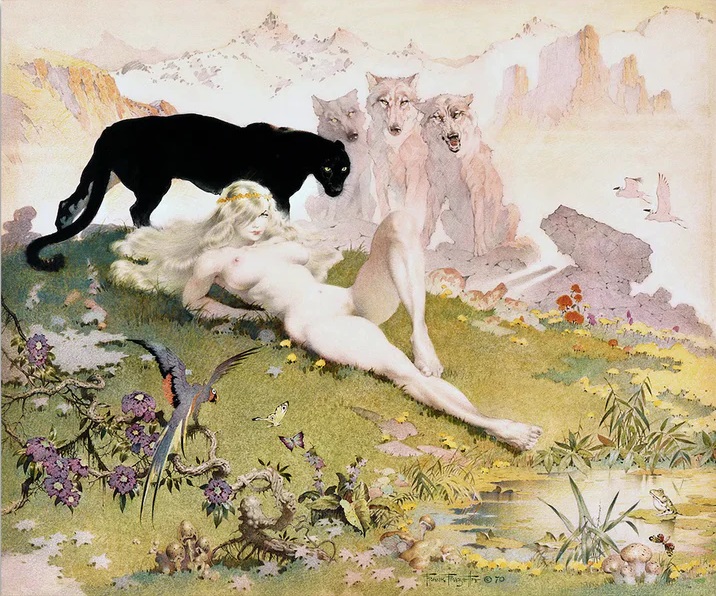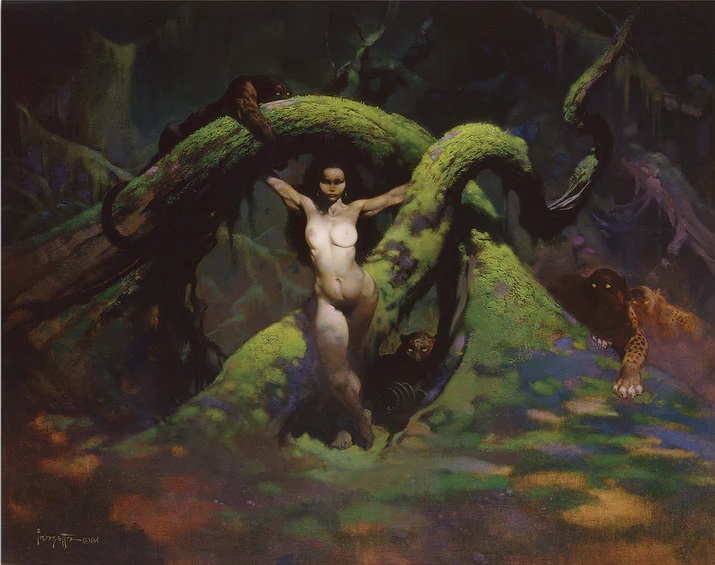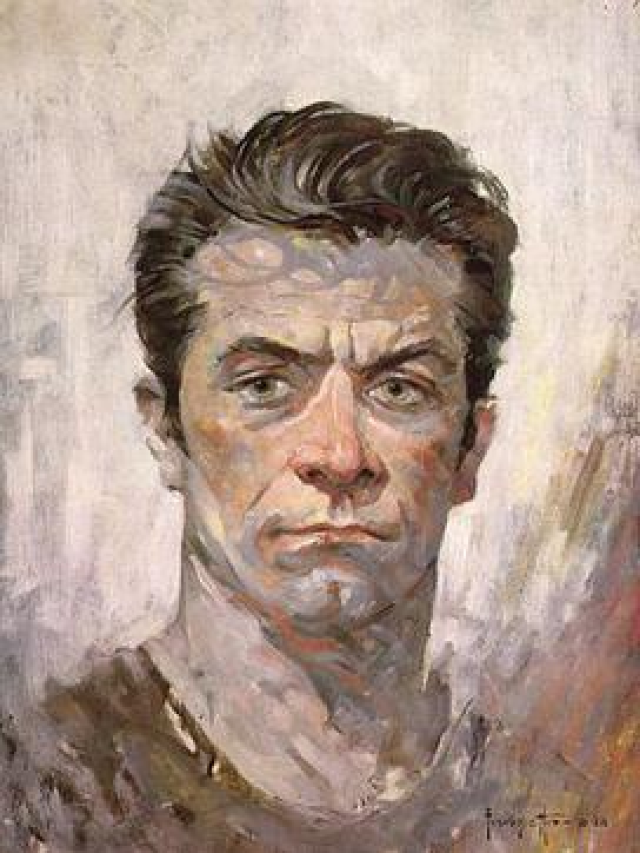Art of Frank Frazetta
American artist Frank Frazetta was a significant figure in fantasy and science fiction. Born on February 9, 1928, in Brooklyn, New York, he had a productive career that left a lasting impact in comic books, paperback covers, and fine art. He showed extraordinary artistic aptitude from an early age. Frazetta has been dubbed the “Godfather of Fantasy Art” because of his unique style and ability to encapsulate the spirit of epic tales. Frazetta was born into a Sicilian-American working-class family. Frank’s early interest in art was greatly influenced by the fact that his father was also an artist. Motivated by his educators, he started taking drawing seriously at eight, rapidly honing his illustration skills. He began his professional career at sixteen, breaking into the Golden Age of comic books. Before making a name for himself as a gifted artist, he first assisted John Giunta.
In the beginning, Frazetta mostly created comic strips and covers, but as comic books lost favour, he soon moved into more commercial pursuits. His major break came when he began working for Warren Publishing in the 1960s, designing eye-catching covers for magazines like Creepy and Eerie. This was when his reputation as a skilled illustrator first gained traction. The fantasy genre and the character’s general popularity were significantly impacted by Frazetta’s covers for the Conan the Barbarian series. His illustrations aided in the revival of interest in stories involving swords and sorcery. It influenced classic works of literature and film, including the 1982 Arnold Schwarzenegger picture.
Beyond Conan, Frazetta’s creative influence may be seen in his renowned paintings of various characters, such as Tarzan, John Carter of Mars, and horror themes. His depictions of emotion and energy raised the bar for fantasy painting, giving his characters a genuine sense of life. This strategy cemented his status as a significant cultural impact while defining the aesthetic of fantasy illustration. The impact Frank Frazetta has had on fantasy art is immense. His vivid and emotional images transformed the genre by fusing high art methods with mass appeal. His works, which captivate audiences worldwide, frequently depict svelte women and powerful heroes fighting legendary monsters in tremendous confrontations.

Frazetta has influenced many artists and makers because of his distinctive style and narrative methods. Famous people who have acknowledged Frazetta’s influence on their work include author George R.R. Martin and filmmaker George Lucas, proving Frazetta’s influence in the literary and film industries. His influence inspires new generations of painters, as evidenced by the numerous modern artists who imitate his subjects and style. Several fundamental aesthetic characteristics distinguish Frazetta’s work from that of his contemporaries. His compositions are imbued with an unmatched sense of movement and dynamism, first and foremost. He frequently represented people in the middle of activity, conjuring up a tangible energy that transports viewers to exotic settings.
Frazetta: Life and Medium
Frazetta used a variety of artistic mediums, which added to the distinctiveness of his creations. Some were simple tone values, memory painting, and eye-catching proportions. Instead of using accurate models, he frequently used his imagination to capture his topics’ drama and emotional core.
His work is renowned for its meticulous detail hierarchy and powerful use of contrast. Frazetta’s paintings have depth and intensity because of his talent for using stark contrasts between light and shadow to draw the viewer’s attention to specific focal spots. This method produced an engaging visual experience for viewers when used with vibrant colours and textures. The archetypal themes that Frazetta explores in his works include adventure, existential conflict, and heroism. His feminine characters defy conventional gender conventions by embodying strength and sensuality, while his protagonists frequently represent ideas of strength and resilience in the face of adversity. These elements, which recall everyday human experiences and ideas, add to the artwork’s timeless appeal.

With his death on May 10, 2010, fantasy art ended, but Frank Frazetta’s influence remained. In the collectables market, his art frequently fetches enormous sums, and he continues to have exhibitions, auctions, and retrospectives honouring him. The enduring appeal of Frazetta’s artwork is evidence of his contributions’ cultural significance and timelessness. Besides his creative contributions, Frazetta’s influence on mainstream media is still palpable. His fantastical depictions of fantasy characters have gained notoriety and become visual landmarks for several generations of fans and artists. Frazetta’s groundbreaking influence has contributed to the recent resurgence of interest in the science fiction and high fantasy genres, as both up-and-coming artists and established ones have found inspiration in his works.
Conclusion
The life and work of Frank Frazetta serve as an example of how art can change genres and cultures. Frazetta’s path, which began with his modest origins as a teenage artist in Brooklyn and culminated in his respectable status as a figure in the pantheon of fantasy painting, is evidence of his talent and vision. His efforts helped to define the fantasy tale genre’s visual aesthetics, and his influence is still felt and inspired by the art world and beyond. When one considers the impact of Frazetta’s creations, it is evident that his legacy will captivate the minds of dreamers, authors, and artists for years to come.






